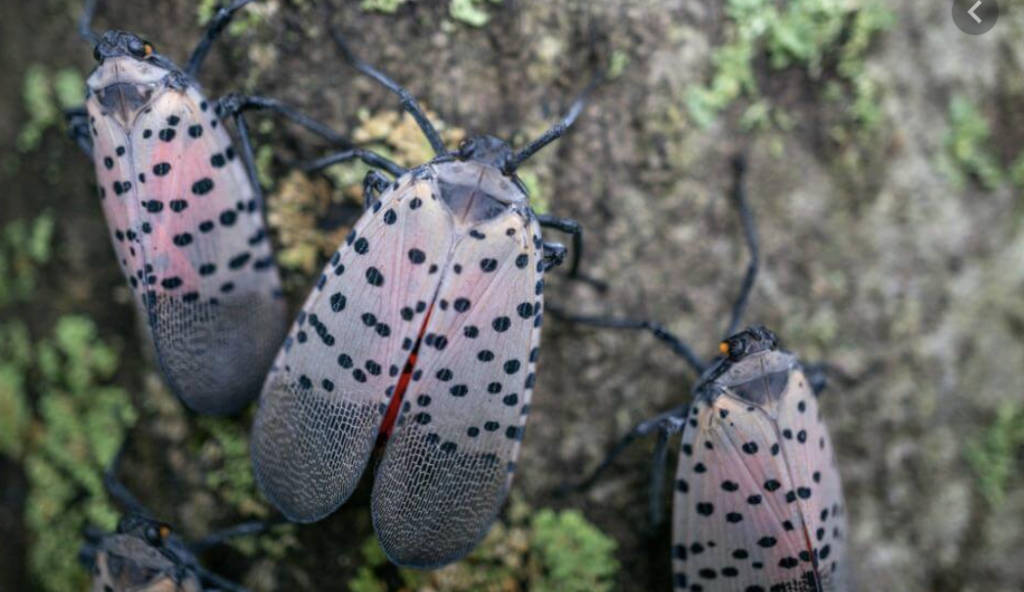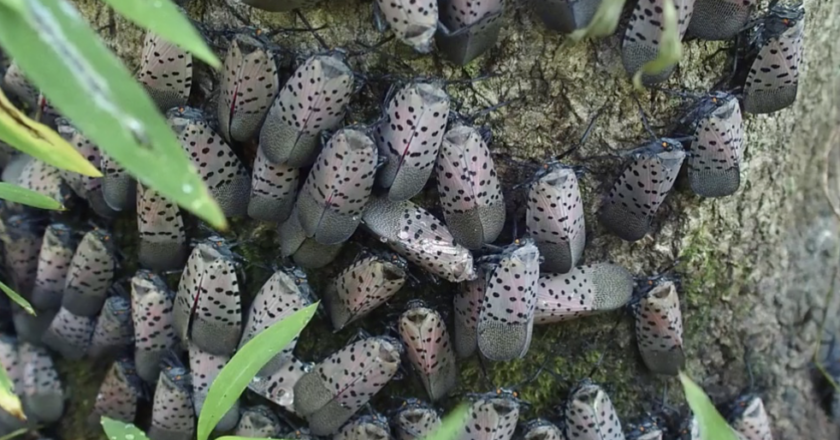Spotted lanternflies are beautiful villains: their red underwings are striking and hard to miss. Don’t let their bright color fool you though; research by Penn State University predicts that this species could potentially be responsible for up to $324 million worth of agricultural damage in PA alone. Lanternflies, first reported in the U.S. in 2014, suck sap out of trees and excrete sugar water, which drips down the trunk and forms a black mold. The loss of nutrients and dangerous black mold ends up killing the affected trees. It doesn’t help that the insects target economically important plants, like grapevines and apple trees. This year there have been a record number of spotted lanternflies in PA and surrounding states.
To combat these effects, measures are being taken to reduce spotted lanternfly populations. For example, the University of Pennsylvania School of Veterinary Medicine and Penn Vet Working Dog Center are in the process of training dogs to sniff out spotted lanternfly egg masses— which contain anywhere from 30 to 50 eggs—before they hatch. Lucky, a German Shepard, will be the first dog trained by the state that works to detect and destroy spotted lanternfly eggs. According to an article by PhillyVoice, researchers are also exploring the use of predators, such as birds and spiders, to eat these pests. Unfortunately, however, the scientists studying these insects have noted that many animals and insects do not eat the lanternflies, possibly because of bitter taste or toxin production, which is one of the adaptive traits that allow spotted lanternflies to thrive in PA.

To combat the lack of native predators, researchers are exploring the possibility of introducing the spotted lanternfly’s wasp predator from China. One issue with this idea is that the foreign predators could become another destructive invasive species. Alternatively, research institutions recommend the use of trap trees—trees that spotted lanternflies prefer, but have fatal insecticide on them— to kill as many bugs as possible. In either case, scientists still urge the public to do their part and squash these bugs or their eggs whenever found.
Students at GA are also helping to research the lanternfly invasion. Sangeetha Bhuyan ‘22 recently completed a science fair project exploring the most environmentally-friendly pesticides and their ability to kill the lanternflies. Now she says that the best way to eliminate them “once and for all is to get them to stop reproducing”, which she is exploring ways to do. Although it might not seem like it makes a big difference, Sangeetha also emphasizes that everyone must do their part by crushing the lanternflies and protecting trees in their yards by making sure that no trees are infested. She believes that the idea to bring the lanternfly’s competitor from China is controversial because the predators “might do more damage” than the lanternflies. She states that the predators might just become another invasive species themselves. As scientists continue to research these pests, the public must do their part and smash as many as possible!
https://www.inquirer.com/science/climate/spotted-lanternfly-scent-detection-dogs-20200925.html

